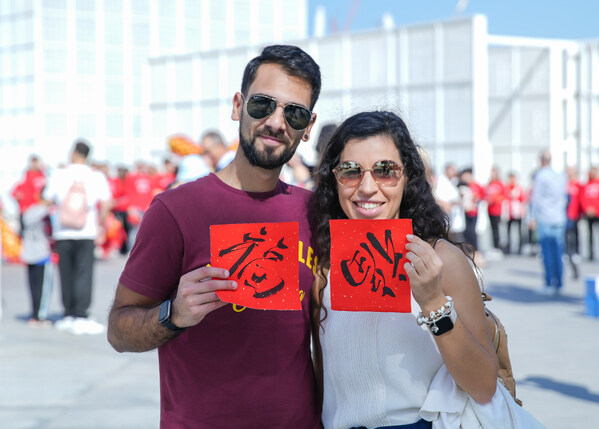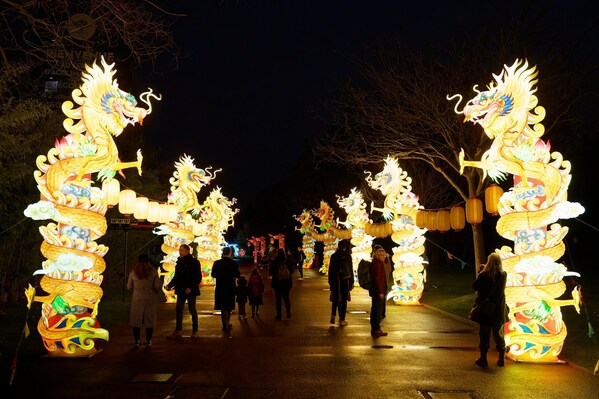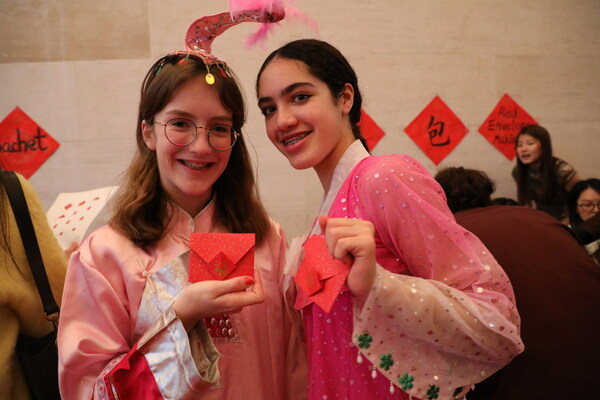BEIJING, Feb. 8, 2024 /PRNewswire/ — A report from People’s Daily: The 78th UN General Assembly has adopted a resolution by consensus to list the Lunar New Year, known as Spring Festival in China, as a UN floating holiday.

A flash mob themed on Chinese New Year was held at the Louvre Abu Dhabi museum in the United Arab Emirates, during which the dragon dance performance and calligraphy experience attracted many tourists. (Photo by Tarek Ibrahim)
It’s another example of the increasing international appeal of the Spring Festival, showcasing once again the influence of Chinese culture.

Yuyuan Garden Lantern Festival, a national intangible cultural heritage in China, is illuminated in Paris, France, with 60 large light sets and more than 2,000 lanterns from Dec. 15, 2023, to Feb. 25, 2024. It’s Yuyuan Garden Lantern Festival’s first overseas exhibition. (Photo by Glenn Gervot)
The festival, born in China, has become a global cultural event, bringing joy to people around the world.

On January 28, 2024, the Chinese Embassy in the United States held an event to celebrate the 45th anniversary of the China-U.S. student exchanges and the Spring Festival Gala for Chinese and American youths. (Photo by Li Zhiwei/People’s Daily)
The Spring Festival is becoming a global holiday. Some rough estimates suggest that the festival is a public holiday in almost 20 countries and is celebrated in various ways by about one-fifth of humanity.
In recent years, a “Spring Festival fever” has been heating up overseas. Every Spring Festival, dignitaries from various countries send greetings to the Chinese people.
Since 2010, a series of activities celebrating the festival have been hosted across the world, from New York in the United States to Tokyo in Japan, from Madrid in Spain to Belgrade in Serbia, and from Moscow in Russia to Auckland in New Zealand.
Splendid events such as traditional dragon and lion dances, Chinese New Year painting, dumpling making, and temple fairs have been hosted globally, allowing people of different nationalities and cultural backgrounds to experience traditional Chinese culture immersively and have a great time.
The adoption of the resolution shows that the Spring Festival has been warmly welcomed and supported by UN member states and staff of the UN Secretariat. The festival will become more and more international.
The Spring Festival is a window for the world to better perceive China. As the most ancient and important traditional festival in Chinese culture, the Spring Festival is a time for family reunions and ringing in the new year.
For Chinese people both at home and abroad, no matter where they are or how far they have traveled, going home for the Chinese New Year is a tradition always cherished.
The New Year’s atmosphere comes with the warmth of a family reunion after a long journey, the hustle and bustle of visiting relatives and friends with gifts, the joyous celebrations in streets decorated with lanterns, and the wishes for a better life in the coming new year.
As times change, Chinese people have found more ways to celebrate the Chinese New Year. Digital red envelopes have become a new festive element, and many families are spending the festival on trips. Regardless of the changing forms, what remains unchanged is the deep-rooted family culture ingrained in the Chinese people.
A BBC documentary introducing the Spring Festival focused on the spectacular sight of hundreds of millions of Chinese people traveling home for family reunions. Understanding the Spring Festival means understanding the deep-rooted longing for family reunions and the strong sense of patriotism that binds the Chinese people together.
The Chinese Lunar New Year builds a bridge for exchanges and mutual learning among civilizations. It symbolizes joy, harmony and peace and its Chinese name “Spring Festival” conveys the greetings and warmth of the spring season. The festival embodies the core values of harmony, love and peace in Chinese culture, and carries the common values of humanity including harmonious family, social inclusion and sound relationship between man and nature.
China’s promotion of the festival as a UN floating holiday is a pragmatic step toward implementing its Global Civilizations Initiative and advocating respect for the diversity of the world’s civilizations, conveying the hope for harmonious coexistence, mutual reinforcement, and exchanges and mutual learning among different civilizations. The efforts also represent the aspiration for people from all countries to understand and befriend each other, and to work together hand in hand.
Egyptian Ambassador to China Assem Hanafi saw the similarities between the Egyptian and Chinese people in cherishing family and kinship through traditional Chinese festivals such as the Spring Festival. He said that people from all countries are in greater need of the happiness that festivals bring in the turbulent world today.
Sitting together with family, listening to each other, and sharing laughter are the most comforting times for people. The Spring Festival is exactly a perfect opportunity for Chinese and friends from all over the world to share Chinese culture and enjoy wonderful moments together.
With the adoption of the UN resolution, the cultural significance of the festival will resonate more widely among people from different countries. This will effectively promote the exchanges and mutual learning among civilizations, and showcase the values of diversity and inclusiveness advocated by the UN.















